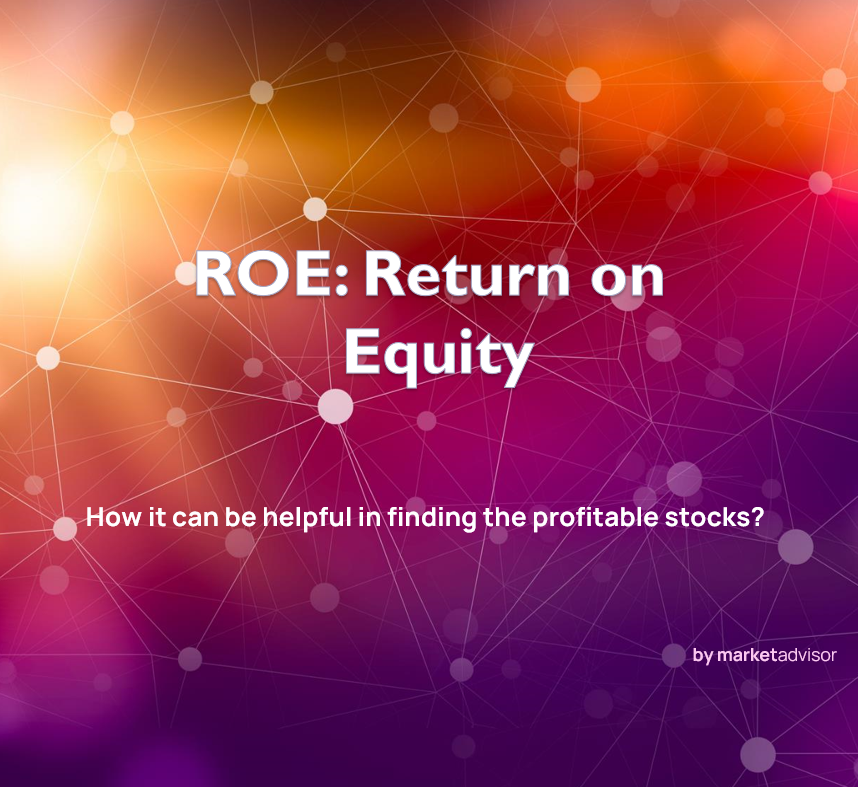Portfolios can benefit greatly from investing in companies that generate profits more effectively than their competitors. Return on equity (ROE) can assist investors in differentiating between profit producers and profit burners.
On the other hand, ROE may not always reveal the complete picture of a company and must be utilized with caution. In this section, we delve more into return on equity, what it entails, and how it is applied in practice.
What Is the Definition of Return on Equity?
ROE provides a measure of profit-generating efficiency by calculating the earnings a company can create from assets. ROE assists investors in determining if a company is a profit engine or an inefficient operator.
Firms that excel at extracting profit from their operations frequently have a competitive advantage, which usually translates into higher returns for investors. Because of the relationship between the company’s profit and the investor’s return, ROE is a particularly relevant indicator to investigate.
Investors might utilize five-year averages of ROE of companies in the same industry to identify companies with a competitive advantage.
Formula
The formula is:
Return On Equity = Net Income / Shareholder's EquityNet income is listed on the income statement, but you may also calculate it by adding the earnings from the previous four quarters. On the balance sheet, shareholders’ equity is simply the difference between total assets and total liabilities. The tangible assets that have been developed by the company are represented by shareholders’ equity.
The same time period should be covered by both net income and shareholders’ equity.
What Should Return on Equity Mean?
ROE is a valuable indicator of financial performance since it indicates if the company is producing profits without investing fresh equity capital. A continually growing ROE indicates that management is providing more value to shareholders, as indicated by shareholders’ equity. Simply simply, ROE measures how successfully management uses investors’ money.
However, it turns out that a corporation cannot increase earnings faster than its present ROE without obtaining new capital. As example, a company with a 15% ROE cannot raise its earnings faster than 15% per year without borrowing money or selling additional stock. Raising finances, however, has a cost. Additional debt service reduces net income, while selling more shares reduces earnings per share (EPS) by increasing the total number of shares outstanding.
As a result, ROE effectively serves as a speed limit for a firm’s growth rate, which is why money managers rely on it to assess growth potential. In fact, when evaluating investment candidates, many specify a minimum acceptable ROE of 15%.
ROE Limitations
ROE is not a perfect predictor of investment value. After all, anytime the value of shareholders’ equity, the denominator, falls, the ratio rises dramatically.
If a corporation, for example, takes a big write-down, the loss in income (the numerator of ROE) happens only in the year in which the expenditure is incurred. As a result, the write-down has a greater impact on shareholders’ equity (the denominator) in subsequent years, resulting in an overall increase in the ROE despite no improvement in the company’s operations.
Share buybacks, like write-downs, often lower shareholders’ equity proportionately far more than they depress earnings. As a result, stock buybacks artificially enhance ROE.
Furthermore, a high ROE does not indicate whether a corporation has excessive debt and is raising more capital from borrowing rather than issuing shares. Remember that shareholders’ equity is equal to assets minus liabilities, which indicate what the company owes, both long-term and short-term debt. As a result, the more a company’s debt, the lower its equity. And the lower a company’s equity, the greater its ROE ratio.
That’s why when looking for a successful firm crucial figures have to be considered such as return on invested capital (ROIC), earnings per share (EPS), and return on assets (ROA).
Conclusion
To summarize, no single indicator can provide an ideal instrument for assessing fundamentals. However, comparing five-year average ROEs within a single industrial sector identifies businesses with a competitive edge and a track record of producing shareholder value.
Consider ROE to be a useful technique for identifying industry leaders. A high ROE might indicate unrealized value potential, as long as you understand where the figures are coming from.
